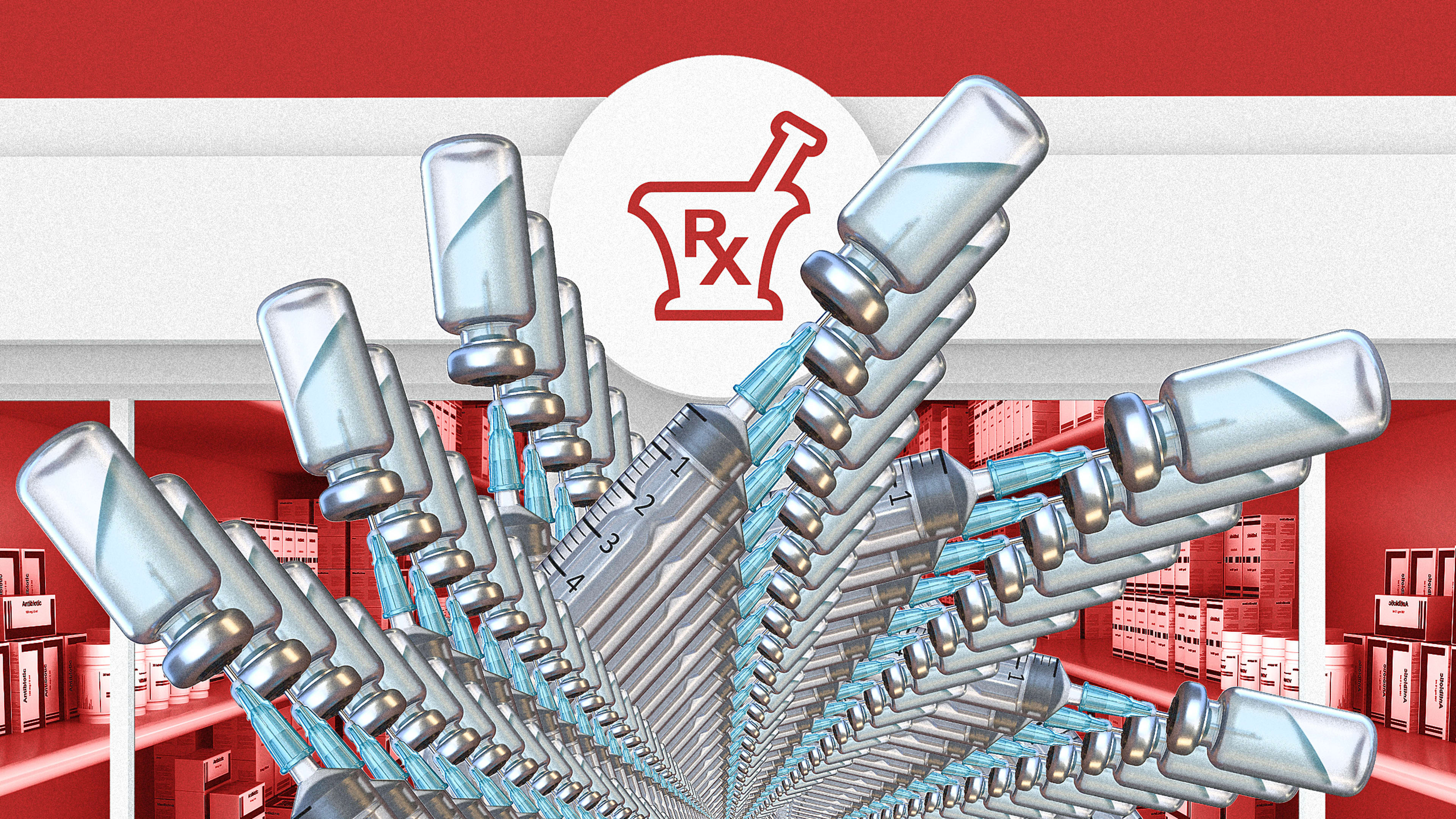When Pfizer and Moderna each announced COVID-19 vaccines, humanity witnessed the miracles of modern science. Their more than 90% efficacy rates were far beyond the roughly 50% offered by flu shots. For a brief moment, it seemed like America would quickly put this whole thing behind us. The catch? We’d have to produce and administer hundreds of millions of vaccines first.
Then Donald Trump failed to acquire enough doses for Americans. Most states appeared to botch the initial rollout, dispensing a fraction of what they received. And every day, there seems to be a new story about what’s going wrong with America’s vaccination efforts. Joe Biden’s promise of 1.3 to 1.5 million vaccines delivered a day, with most of us vaccinated by late spring or summer, has looked like an impossibly tight deadline.
But according to The New York Times, we’re already delivering 1.3 million doses daily. And we’ve barely tapped the full potential of one of our most powerful bits of infrastructure that could push that number much higher. I’m not talking about bringing in the National Guard, though that’s a perfectly fine idea. I’m talking about the 88,000 drug stores across the United States—including the giants CVS, Walgreens, and Walmart—which are still waiting on their dedicated vaccine supply from the federal government. (UPDATE: The Biden administration just announced that pharmacy-dedicated vaccines will start shipping on February 11.)

Walgreens tells Fast Company it can toss in another 25 million vaccinations a month. And Walmart tells us they are good for another 10 to 13 million. Together, these three companies could provide 60 million vaccinations to Americans a month—or two million vaccinations a day—and that’s not counting more than a dozen other pharmacy chains across America, let alone hospitals, state-established vaccination sites, or Biden’s recent instatement of the National Guard. So why can’t most of us get a vaccine at CVS yet?
The private sector offers help
Since vaccines began to roll out, companies across the private sector have offered their expertise. Starbucks set up a lab to experiment with creating efficient vaccination sites for Washington state—and a spokesperson told Fast Company that if the partnership proved helpful, they would consider offering such services nationwide. (The company clarified that Starbucks would not actually be vaccinating anyone, as many have assumed.) Airbnb has offered assistance in storing vaccines. Amazon has said it is ready to “leverage our operations, information technology, and communications capabilities and expertise to [Biden’s] vaccination efforts.”
But to distribute these vaccines, we don’t necessarily need extra hands from the corporate world, which might actually get in the way.
“I think having one more actor in the mix is not necessarily a good recipe right now,” says Hani Mahmassani, a professor at Northwestern who specializes in logistics, and who is currently working under a National Science Foundation grant to study COVID-19 vaccine implementation. And he says Amazon, while a global infrastructural juggernaut, is an unnecessary player.

But Mahmassani is more bullish on private sector healthcare specialists, such as pharmacies, because they have brick-and-mortar locations (75% of Americans live within 3 miles of a CVS; 85% are within 10 miles) and they have staff trained in vaccine administration to do the job. His own estimation is that it takes about 5 minutes for a vaccine to be delivered by one person. That means an individual pharmacy location—assuming it’s staffed and scheduled to capacity—could deliver 12 vaccinations an hour, or nearly 100 per store per day. His estimates scale to the purported capacities of CVS and Walgreens.
“Pharmacy can be a huge part of the solution,” says CVS’s Cox. “Can we do it alone? [No.] You’ll have certain parts of the population in pharmacy deserts.”
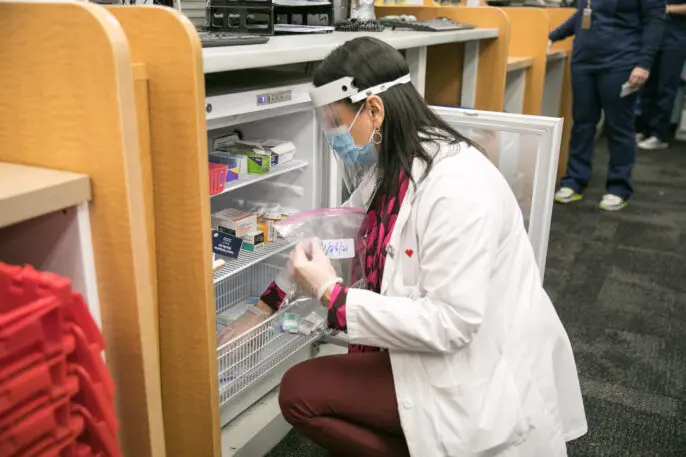
So why don’t pharmacies have vaccines?
So why aren’t our pharmacies stocked with vaccines? The short answer is supply. We don’t currently have enough inbound vaccines to satisfy state and private sector requests (though Biden’s incoming supply should help relieve this shortage within months). The longer answer is more nuanced; you have to understand how the Trump administration allocated vaccines to begin with.
All of America’s vaccine supply—currently promised to be enough to vaccinate 300 million people—is being distributed through the U.S. government. Technically, vaccine supplies are delivered straight from pharmaceutical companies as doses are produced, but the government has determined what goes where.
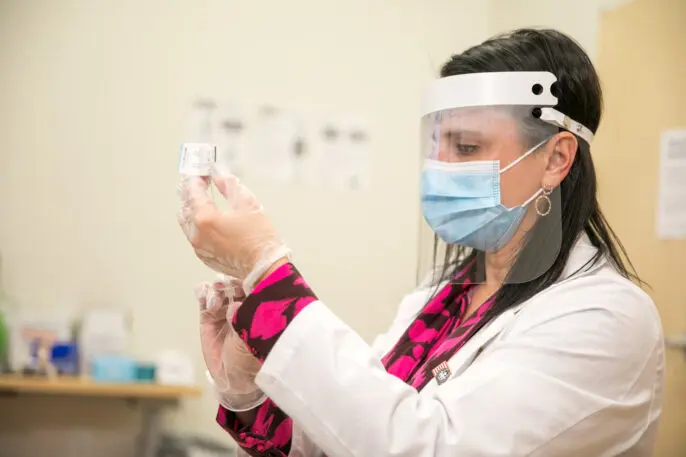
Secondly, the government earmarks some vaccine supply to states with clear directives as to where it must go. These vaccines are being delivered through federal partnerships with CVS and Walgreens, which agreed to go into retirement homes and similar high-risk areas to administer these vaccines with their private staff. Basically, this is a state service that the federal government and private sector actually control. Another strange curveball in this program is that this supply isn’t determined by the actual head counts in assisted living facilities, but by bed counts. “In almost every state . . . the allocations that were predetermined to CVS and Walgreens were higher than they needed to be. They had accumulated excess doses in their inventory,” says Josh Geballe, the chief operating officer of the state of Connecticut, in charge of his state’s lauded COVID-19 vaccine rollout. This over-allocation of vaccines to these facilities is now being sorted out on a state-by-state basis.
Finally, there’s a third method of vaccine allocation, which is the federal government to private pharmacies. This is the supply that hasn’t started to be delivered yet. It’s what would provide pharmacies with their own stockpile to use in stores (rather than being delivered to facilities), allowing pharmacies to administer tens of millions of vaccinations per month. These vaccines would be free to receive, and all patient data is protected in line with HIPAA (just as they are at hospitals). Of course, there is a business incentive for pharmacies to deliver these vaccines. They make money for each vaccination by charging an administration fee, which is billed to either a patient’s insurance or a federally paid program. But no one will have to pay out of pocket for a pharmacy-delivered COVID-19 vaccine.
If you’ve been following vaccination rollout, you will have heard some big complaints from states about the CVS/Walgreens rollouts to long-term care communities—in Rhode Island and Illinois in particular. You might ask: If pharmacies can’t manage this first contract, how could they possibly handle nationwide rollout in their stores?
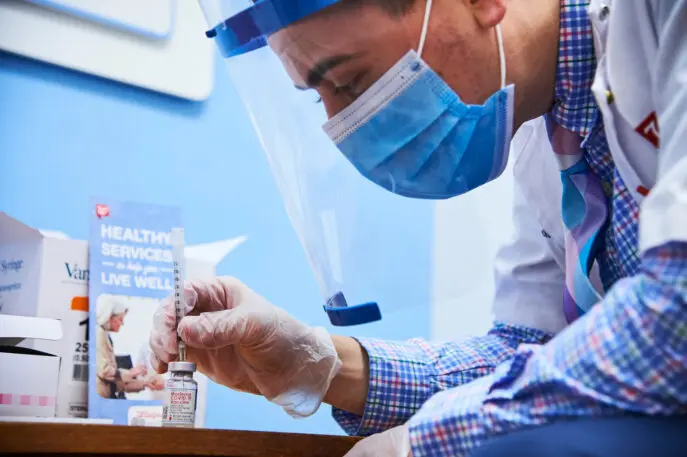
Geballe defends the companies too. “It’s not just you show up one day and vaccinate everyone. There’s lots of advanced prep. Getting consent. Education with staff and patients for high uptake when they show up,” says Geballe. “We were in dialogue in the buildup with CVS and Walgreens. . . . They both did a fabulous job mobilizing teams and executing well.”
Examining the situation more closely, CVS and Walgreens both point out that states were required to activate the agreement to send pharmacists into these at-risk spaces, and many lagged several weeks in doing so. These stages were tiered, with skilled nurses going first, then long-term care facilities second.
Instead, CVS reports that many states waited a week to activate stage one. Some states hadn’t even activated phase two of their vaccination requests until January 25, a full month after the program opened. And according to both CVS and Walgreens, most states chose to stagger this rollout in roughly one-third chunks, padding a couple of weeks in between each requested wave of service. Through this lens, it’s easy to paint states as the villains and pharmacies as the heroes, but that conclusion isn’t so simple, either. In fact, states might have been right in adding that padding, given a surprisingly low uptick to taking the vaccine by many in the medical community—for instance, 60% of nursing home staff in Ohio has refused the COVID-19 vaccine to date.
“In our first round of clinics we saw anywhere from 30% to 50% [vaccination rate] from staff members. That’s primarily anecdotal feedback from field teams,” says Cox. “But as we go into second doses, there has been a growth. I think there’s two factors there. One, they’ve seen some of their friends get the shot. Secondly, some facilities did show an interest in staggering staff. Side effect data, like fatigue, was slightly higher with the second dose.”

Maxing capacity—theory or reality?
Thus far, the limited number of vaccines that has arrived inside pharmacies is the result of overflow from the aforementioned assisted living facility agreements—which means in-store pharmacy delivery is limited to just a handful of locations in some states. But for them to reach any impactful scale, they need the government to begin sending vaccines directly for in-store distribution. The government has not announced a timeline for this yet. When we reached out to FEMA and HHS to clarify this and other matters, neither offered comment.
In reporting this story, I found states may be confused that this federal allocation to pharmacies is on its way. When I spoke to Geballe, who is in charge of state rollout across Connecticut, he denied this pharmacy program even existed. It wasn’t until I shared the actual announcement of the federal pharmacy program, first made in November, that he realized this plan was going to offer relief to his state at all.
“You’re absolutely right. I didn’t even realize they are getting dedicated supply from the feds,” said Geballe in a follow-up. “That was news to me, and great news.” While we don’t know what percentage of the nation’s overall vaccine supply is going to this private program, Geballe believes the government will activate that pharmacy allotment in the coming weeks. (UPDATE: The Biden administration just announced that pharmacy-dedicated vaccines will start shipping on February 11.) And while pharmacies have the capacity to deliver tens of millions of vaccines a month through that program, it’s questionable whether they can, first and foremost, secure that much supply. And that’s especially worrisome as the SARS-CoV-2 virus continues to mutate, since the fastest way to stop mutations is to reach herd immunity.
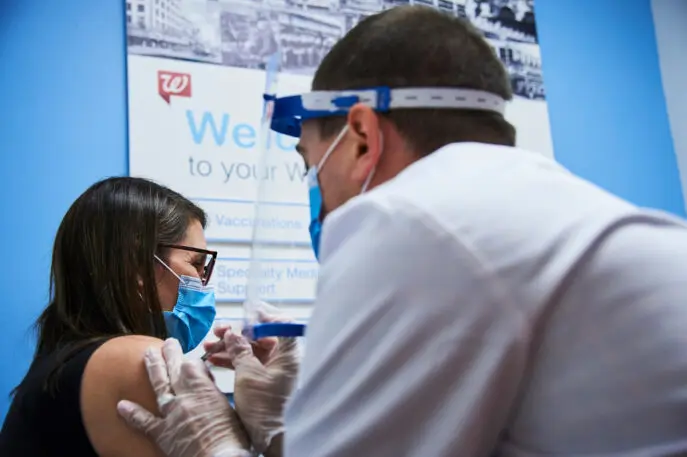
Meanwhile, Geballe is bullish on the Biden administration’s approach to a national vaccination plan. He points out that they’re making it easier for states to handle their own vaccine rollouts. Under Trump, Connecticut learned how many doses it would receive on a Tuesday of the same week they needed to be deployed. That meant every week was a scramble to balance its own capacity. Now, states can know their inbound supply a full three weeks in advance, allowing them to plan for administration.
“The tone has definitely changed from [Trump’s], ‘States, you’re on your own, good luck!’ to ‘How can we help?’ That change in tone has been dramatic and very encouraging,” says Geballe. “But it’s still early days as to figuring out the best areas to where that help can be provided beyond what every state is saying right now, which is, first and foremost, ‘Please send us more vaccine.'”
Granted, it’s hardly encouraging that America’s most significant limiter in beating COVID-19 is the sheer lack of vaccinations that we have in our hands. But in talking to nine different specialists for this story, all of whom are intimately familiar with the rollout, I actually found myself more at ease. For everything that’s gone wrong, we are still vaccinating a lot of people—and with an infrastructure of pharmacies sitting ready to vaccinate a whole lot more. At some point in the near future, you really will be able to schedule your appointment in an app, walk into your local pharmacy, and get your shot. And that will be a day worth celebrating.
Recognize your brand’s excellence by applying to this year’s Brands That Matter Awards before the early-rate deadline, May 3.
